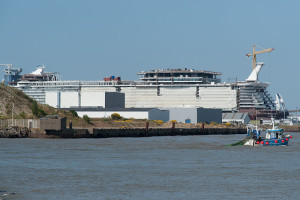 While cruise ship companies are struggling to lure passengers by building the biggest ever ships and offering various first-of-its-kind amenities aboard, they have been loudly trumpeting how their ships’ monster engines are designed to run as cheap as possible. However, there are concerns that the bigger the ships are the more polluting and harmful they are to the living world.
While cruise ship companies are struggling to lure passengers by building the biggest ever ships and offering various first-of-its-kind amenities aboard, they have been loudly trumpeting how their ships’ monster engines are designed to run as cheap as possible. However, there are concerns that the bigger the ships are the more polluting and harmful they are to the living world.
As Harmony of the Seas, the biggest ship in the world sets sail from Southampton docks on Sunday on her maiden voyage, environmentalists say she will leave behind a trail of pollution.
The 16-deck-high floating city, carrying 6,780 passengers and 2,100 crew, has three four-storey high 16-cylinder Wartsila engines. With a top speed of 22 knots, the behemoth Harmony of the Seas is the latest mind-blowing ship of the Royal Caribbean fleet. At full power each of the ship’s engines will burn 1,377 gallons an hour, which means about 96,000 gallons a day and the ship uses some of the most polluting diesel fuel in the world, according to some campaigners.
The cruise business becomes the fastest growing segment of the mass tourism industry, as a result the cruise ships are getting bigger and bigger. Therefore, cruising causes environmental impact in form of air and ocean pollution. The road traffic that cruise ships and the cargo ships generate is also huge.
Although Royal Caribbean, the owner of the Harmony of the Seas, says that the latest and most efficient pollution control systems are installed on the ship and they meet all legal requirements, environmental experts claim that such a large vessel would probably burn at least 150 tonnes of diesel fuel a day, and emit more sulphur than several million cars.
